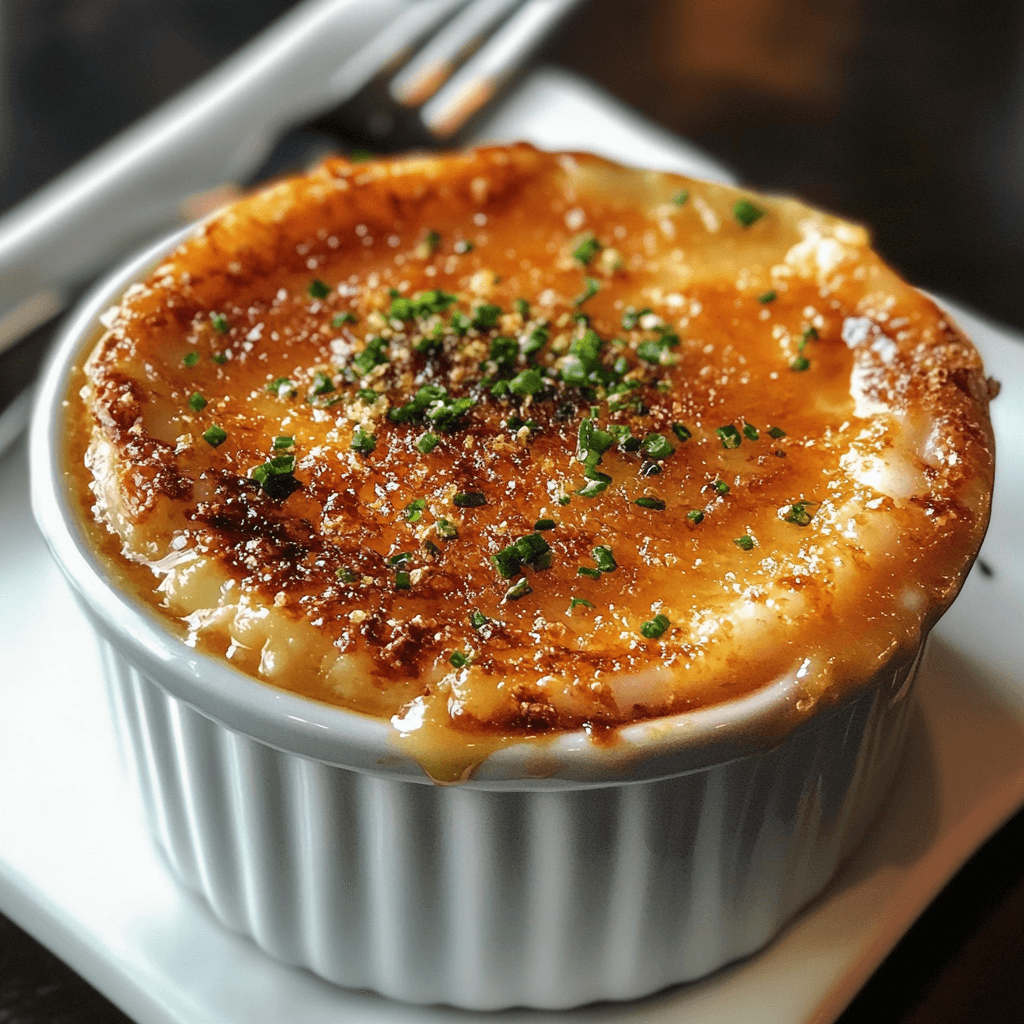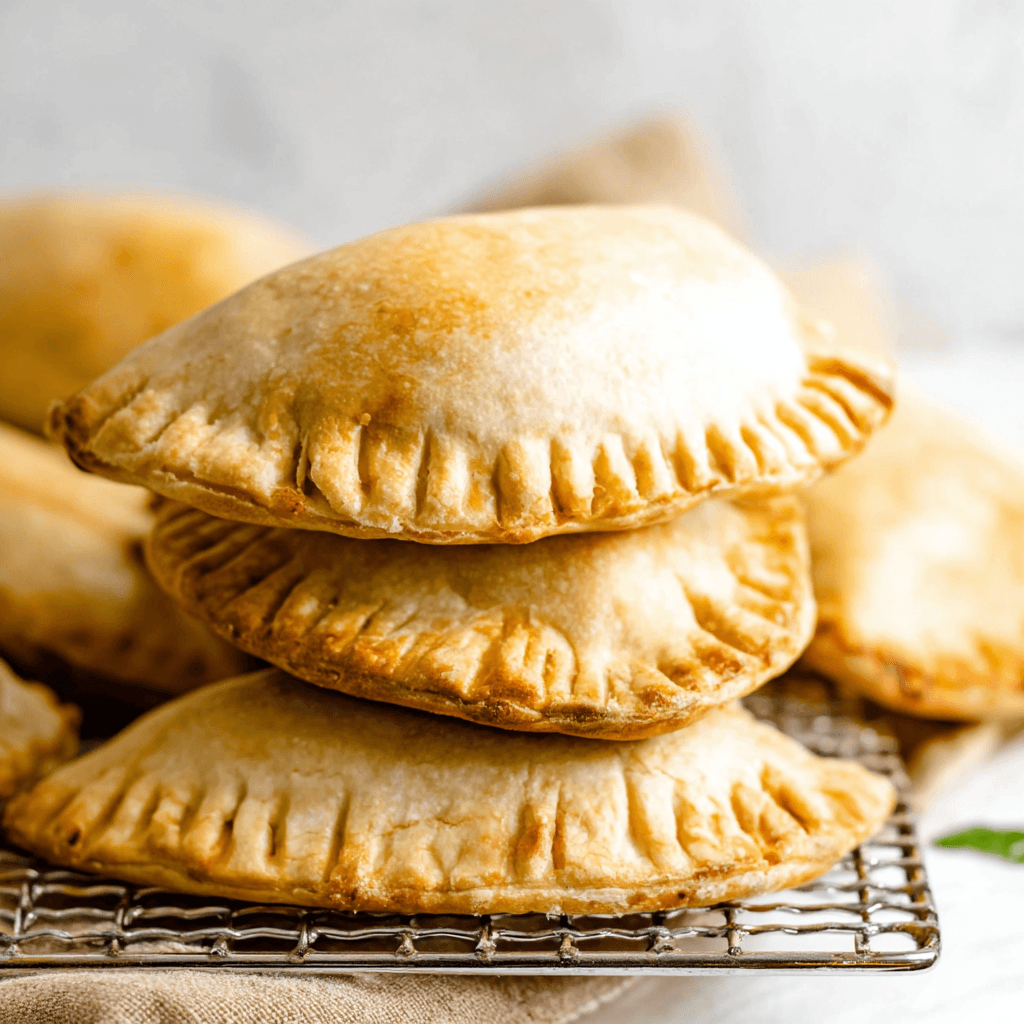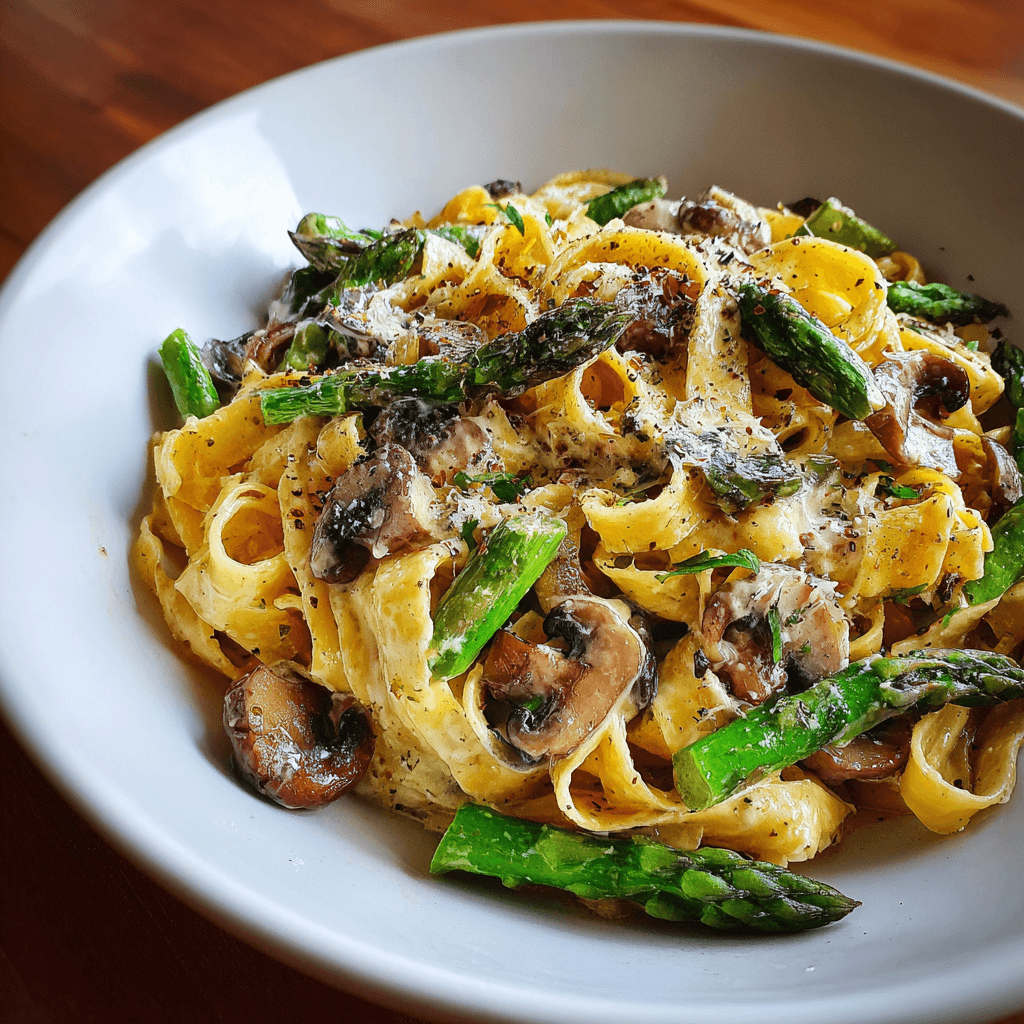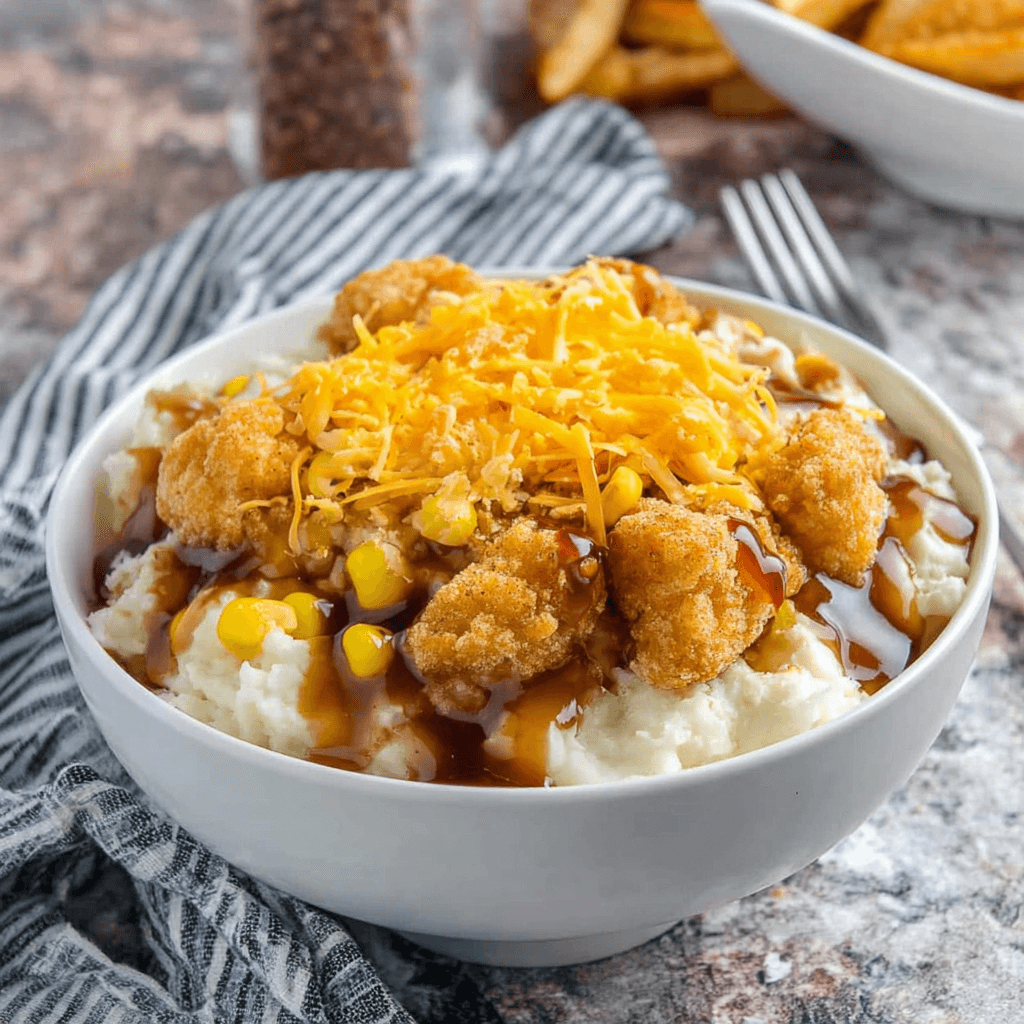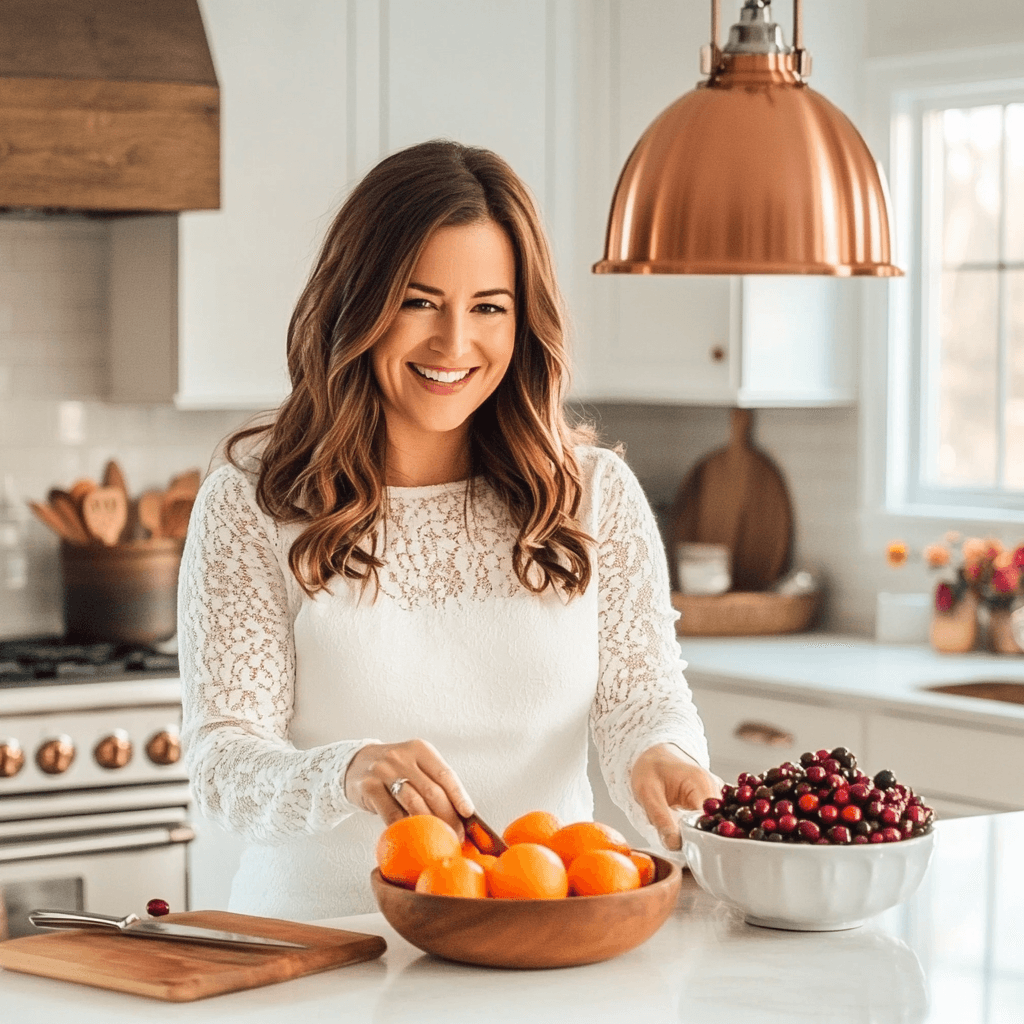Table of Contents
Introduction to Crab Brulee
Crab Brulee is a luxurious and innovative culinary creation that combines the creamy texture of a traditional crème brûlée with the rich, delicate flavors of crab. This dish exemplifies a seamless blend of sweet and savory elements, offering a delightful surprise to the palate. Often served as an appetizer or a sophisticated addition to a multi-course meal, Crab Brulee has gained popularity for its unique twist on classic recipes, showcasing how traditional techniques can be adapted to include seafood.
What is Crab Brulee?
Crab Brulee is a dish that reimagines crème brûlée by infusing it with the essence of fresh crab meat. Typically prepared with a custard base made from eggs, cream, and savory seasonings, it incorporates shredded or pureed crab meat for a burst of oceanic flavor. The dish is topped with a caramelized sugar crust, a hallmark of brûlée, providing a subtle sweetness and a satisfying crunch. The result is a complex and harmonious flavor profile that balances the richness of the custard with the natural sweetness of crab.
The Origins of Crab Brulee
The origins of Crab Brulee are somewhat enigmatic, but the dish is thought to have emerged from the fusion of French culinary techniques and coastal cuisine. The concept likely draws inspiration from the popularity of savory custards and seafood dishes in both European and American coastal regions. Chefs experimenting with flavor pairings began incorporating fresh crab into creamy bases, eventually adapting it to the brûlée format for an unexpected yet delightful variation. Over time, Crab Brulee has become a signature item on menus in fine dining restaurants, particularly in areas celebrated for their seafood.
Why Crab Brulee is a Crowd-Pleaser
Crab Brulee is a crowd-pleaser for several reasons:
- Sophisticated Flavor: The dish appeals to food enthusiasts with its balanced and intricate taste, combining creamy textures, sweet crab meat, and the contrasting crunch of the caramelized topping.
- Visual Appeal: The golden, caramelized crust atop the creamy custard makes for an eye-catching presentation that elevates any dining experience.
- Versatility: Ideal as a starter, part of a seafood platter, or even a stand-alone indulgence, Crab Brulee suits various occasions and dining settings.
- Unique Experience: Its ability to surprise diners with an unconventional twist on familiar dishes ensures it remains a memorable highlight of any menu.
In summary, Crab Brulee is a testament to the creativity and ingenuity of modern gastronomy, offering a sophisticated and flavorful experience that captivates seafood lovers and adventurous eaters alike.
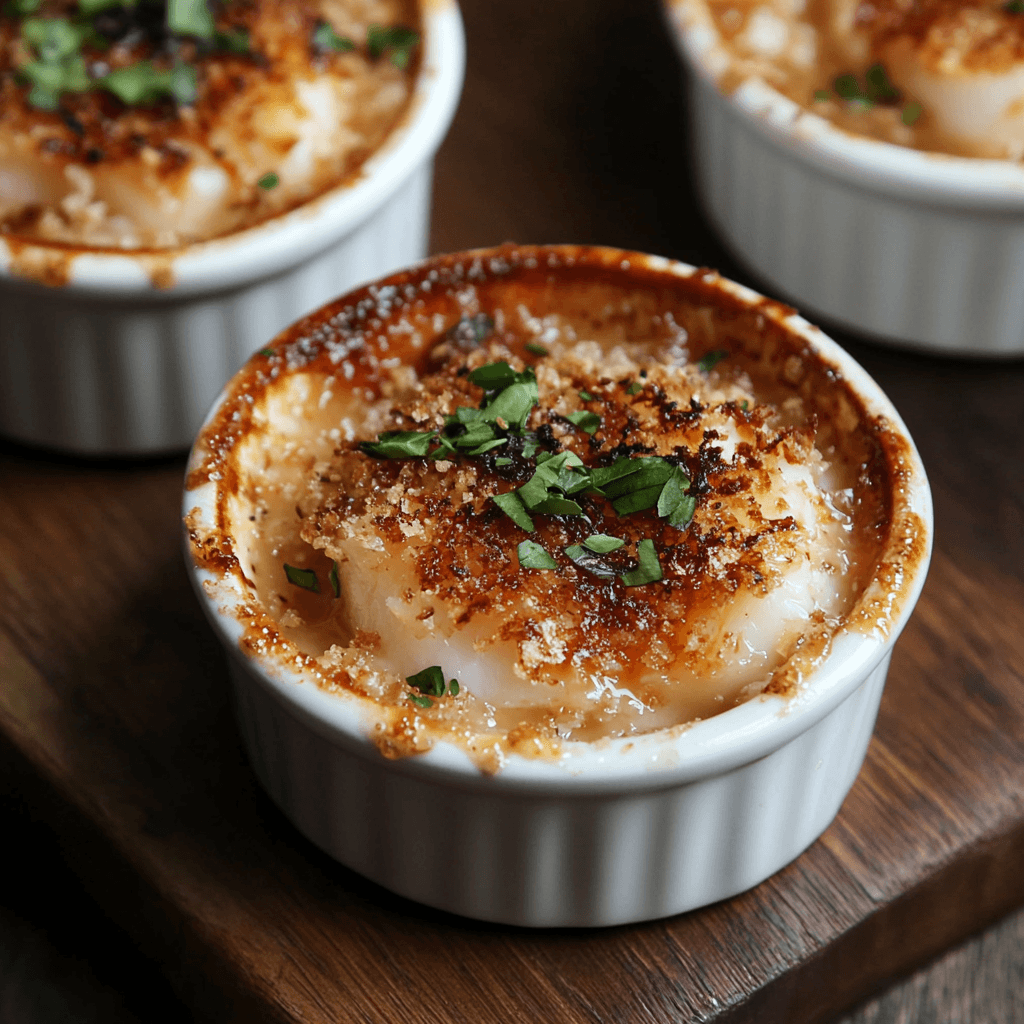
Key Ingredients for Crab Brulee
Crafting a perfect Crab Brulee requires careful selection of ingredients to achieve its signature flavor and texture. The combination of fresh seafood, a creamy base, and optional enhancements ensures a dish that is both luxurious and memorable.
Fresh Crab Meat Selection
The quality of crab meat is the cornerstone of a successful Crab Brulee. Key points to consider include:
- Freshness: Always opt for freshly cooked crab or high-quality refrigerated lump crab meat. Fresh crab provides a delicate sweetness and tender texture that elevates the dish.
- Type of Crab: Blue crab, Dungeness crab, or king crab are popular choices, each offering unique flavor nuances. Blue crab is sweeter, while king crab has a rich, meaty profile.
- Preparation: Ensure the crab meat is free of shell fragments and thoroughly drained to avoid excess moisture, which can compromise the custard’s consistency.
Creamy Base Ingredients
The creamy custard base is the heart of the dish, providing a velvety texture and a neutral canvas that complements the crab’s natural flavors. Key components include:
- Heavy Cream: The primary ingredient for a rich and luxurious custard. Some recipes may include milk for a lighter texture.
- Egg Yolks: Essential for thickening and stabilizing the custard, adding to its silky finish.
- Seasonings: Subtle flavors like salt, white pepper, and a hint of nutmeg or cayenne enhance the dish without overpowering the crab.
- Cheese (Optional): A small amount of grated Parmesan or Gruyère can be added for depth and umami.
Optional Add-Ons for Extra Flavor
To add a unique touch or cater to specific tastes, the following enhancements can elevate your Crab Brulee:
- Herbs and Aromatics:
- Chives or tarragon for freshness.
- A pinch of lemon zest for brightness.
- Seafood Enhancers:
- A splash of sherry or white wine in the custard for complexity.
- A dusting of lobster roe or truffle oil for a gourmet finish.
- Spices:
- A sprinkle of paprika or smoked sea salt for added depth.
- Crunch Variations:
- Mix a small amount of breadcrumbs with the caramelized sugar topping for extra texture.
By carefully selecting and combining these ingredients, Crab Brulee becomes a masterpiece that captures the essence of the sea, enriched by the creaminess and subtle enhancements of a well-crafted custard.
Preparing for Success: Tips Before You Start
Mastering the art of Crab Brulee requires attention to detail and a thoughtful approach. From selecting the ideal ingredients to avoiding common pitfalls, these tips will set you up for culinary success.
Choosing the Right Crab
The crab you choose will directly influence the flavor and quality of your Crab Brulee.
- Fresh vs. Canned: Fresh crab meat is always preferable for its natural sweetness and superior texture. If fresh crab isn’t available, high-quality canned or frozen crab can be a suitable substitute.
- Flavor Profile: Blue crab offers a sweet, delicate flavor, while Dungeness crab has a richer, more robust taste. Choose based on your personal preference or availability.
- Preparation: Carefully inspect the crab meat to ensure it’s free from shells or cartilage. Excess moisture should also be removed to prevent the custard from becoming watery.
Balancing Sweet and Savory Flavors
Striking the perfect balance between sweet and savory is key to creating a memorable Crab Brulee.
- Sugar Topping: The caramelized sugar should add a subtle sweetness without overpowering the dish. A thin layer ensures the perfect crunch and balance.
- Seasoning: Incorporate savory elements like a pinch of salt, a touch of cayenne, or finely chopped herbs to complement the crab’s natural sweetness. Avoid over-seasoning to let the seafood shine.
- Texture: The creamy base and crunchy topping provide a satisfying contrast, so take care not to overcook the custard or under-caramelize the sugar.
Common Mistakes to Avoid
Even experienced cooks can encounter challenges when preparing Crab Brulee. Avoid these common pitfalls for the best results:
- Using Low-Quality Crab Meat:
- Opting for low-grade or overly processed crab will detract from the dish’s flavor. Always use the freshest and best-quality meat available.
- Overcooking the Custard:
- Custard that is overcooked can become grainy or rubbery. Bake it gently in a water bath to maintain a silky texture.
- Inconsistent Sugar Caramelization:
- Use a kitchen torch or broiler to achieve an even, golden crust. Uneven caramelization can leave some areas overly sweet or burnt.
- Neglecting Texture Contrast:
- A crunchy topping is crucial for the dish’s signature appeal. Ensure the sugar layer is thin enough to crack easily but substantial enough to provide a satisfying crunch.
- Skipping the Resting Step:
- Allowing the Crab Brulee to rest and chill enhances its flavor and texture. Rushing this step can compromise the dish’s integrity.
By following these tips, you’ll be well-equipped to create a Crab Brulee that not only impresses your guests but also highlights the artful balance of sweet and savory flavors.

Crab Brulee Recipe
Ingredients
- 1 cup Fresh Crab Meat (shredded and cleaned)
- 2 cups Heavy Cream
- 4 large Egg Yolks
- ½ teaspoon Granulated Sugar
- ¼ teaspoon White Pepper
Step-by-Step Crab Brulee Recipe
Creating a delectable Crab Brulee involves careful preparation, assembly, and attention to detail. Follow this step-by-step guide to craft a dish that is both elegant and flavorful.
Prepping Ingredients
Shredding and Cleaning Crab Meat
- Select Fresh Crab: Choose high-quality fresh crab meat or defrost frozen crab meat properly.
- Clean Thoroughly: Inspect the crab meat for any residual shells or cartilage, ensuring it’s completely clean.
- Shred or Chop: Use your hands or a knife to shred the meat into small, uniform pieces. This makes it easier to blend with the custard base.
- Drain Excess Moisture: Pat the crab meat dry with paper towels to prevent adding unwanted liquid to the dish.
Mixing the Custard Base
- Gather Ingredients: You’ll need heavy cream, egg yolks, salt, white pepper, and optional flavorings like a pinch of cayenne or a splash of sherry.
- Whisk Egg Yolks: In a mixing bowl, whisk the egg yolks until smooth.
- Heat Cream: Warm the heavy cream over medium heat until it’s hot but not boiling.
- Combine Slowly: Gradually whisk the hot cream into the egg yolks to temper them, ensuring a smooth mixture without curdling.
- Season and Add Crab: Fold in the prepared crab meat and season to taste. Mix gently to combine.
Assembling the Dish
- Prepare Ramekins: Lightly grease ramekins or small oven-safe dishes and place them in a deep baking pan.
- Pour Custard: Divide the crab custard mixture evenly among the ramekins. Leave some space at the top to prevent overflow.
- Set Up Water Bath: Fill the baking pan with hot water until it reaches halfway up the sides of the ramekins. This ensures gentle, even cooking.
- Bake: Place the pan in a preheated oven at 325°F (160°C). Bake for 25-30 minutes, or until the custard is set but still slightly jiggly in the center.
Perfecting the Brulee Topping
- Cool the Custards: Allow the ramekins to cool to room temperature, then refrigerate for at least 2 hours to fully set the custard.
- Add Sugar Layer: Sprinkle a thin, even layer of granulated sugar over the surface of each custard.
- Caramelize:
- Use a kitchen torch to gently caramelize the sugar, moving the flame in a circular motion for an even golden crust.
- Alternatively, place the ramekins under a broiler for a few minutes, monitoring closely to prevent burning.
- Rest Before Serving: Let the caramelized sugar cool and harden for a minute or two before serving.
With this comprehensive guide, your Crab Brulee will feature a creamy, flavorful custard base and a perfectly caramelized topping that cracks delightfully under a spoon.
Cooking Process
The cooking process for Crab Brulee is a crucial step that determines its final texture and presentation. Proper baking and caramelizing techniques ensure a creamy custard with a perfectly crisp topping.
Baking to Perfection
- Prepare the Oven and Water Bath:
- Preheat your oven to 325°F (160°C).
- Set the ramekins filled with the crab custard mixture in a deep baking dish, ensuring they are evenly spaced.
- Pour hot water into the baking dish, filling it halfway up the sides of the ramekins. The water bath helps to maintain a consistent temperature, preventing the custard from curdling or cracking.
- Bake Gently:
- Place the baking dish carefully in the oven to avoid spilling the water.
- Bake for 25–30 minutes or until the custards are just set. To check, gently shake a ramekin; the center should have a slight jiggle, which will firm up as it cools.
- Avoid overbaking, as this can lead to a rubbery texture.
- Cool and Chill:
- Remove the ramekins from the water bath and allow them to cool to room temperature.
- Cover with plastic wrap and refrigerate for at least 2 hours (or overnight) to let the custard fully set and develop its flavor.
Torch Technique for Caramelizing
- Add the Sugar Layer:
- Just before serving, sprinkle a thin, even layer of granulated sugar over the surface of each custard.
- Use about 1–2 teaspoons of sugar per ramekin, ensuring full coverage without making the layer too thick.
- Caramelize with a Kitchen Torch:
- Hold the torch about 2–3 inches from the surface of the custard.
- Move the flame in a circular motion, allowing the sugar to melt and caramelize evenly.
- Aim for a golden-brown crust with a slight sheen, avoiding burning or dark spots.
- Alternative Method – Broiler:
- If a torch is unavailable, place the ramekins under a preheated broiler for 1–2 minutes. Monitor closely to ensure even caramelization, as broilers can quickly overheat the sugar.
- Cool the Topping:
- Let the caramelized sugar set for about a minute until it hardens and forms a crisp shell.
By mastering these techniques, your Crab Brulee will showcase a perfectly baked custard and a caramelized topping that delivers a delightful crack with each bite.
How to Serve Crab Brulee
Serving Crab Brulee with thoughtful portioning, presentation, and a touch of elegance can elevate it to a memorable dining experience. Whether it’s for a casual dinner or a special occasion, attention to detail is key.
Ideal Portion Sizes
- Single Serving:
- Crab Brulee is typically served in individual ramekins, with each portion ranging from 4 to 6 ounces. This size is perfect for an appetizer or a small indulgence during a multi-course meal.
- Scaling for Groups:
- For larger gatherings, consider preparing smaller portions in mini ramekins (2–3 ounces) to serve as a canapé or amuse-bouche.
- Pairing with Other Dishes:
- When served as part of a seafood platter, one 4-ounce ramekin per person is a balanced choice.
Presentation Tips
- Ramekin Selection:
- Choose ramekins with a clean and simple design, such as white porcelain, to highlight the dish’s golden caramelized topping.
- Garnishing:
- Add a touch of freshness with a small sprig of herbs like chives or parsley.
- Sprinkle a light dusting of paprika or lemon zest for a pop of color and complementary flavor.
- Plating:
- Serve the ramekins on small plates or chargers with a folded linen napkin for stability and a refined touch.
- Include a small dessert or seafood spoon for easy eating.
- Lighting and Ambiance:
- If serving at night, soft candlelight can enhance the visual appeal of the caramelized top, making it glisten beautifully.
Serving for Special Occasions
- Formal Dinners:
- Present the Crab Brulee as a luxurious appetizer or as part of a gourmet seafood course. Pair it with a crisp white wine, such as Sauvignon Blanc or Chardonnay, to complement its creamy and savory profile.
- Use upscale garnishes like truffle shavings or lobster roe to impress your guests.
- Holiday Celebrations:
- For holiday meals, add festive elements such as edible gold leaf or a tiny star-shaped pastry on the side.
- Pair it with other seasonal dishes like roasted vegetables or citrus-based salads.
- Casual Gatherings:
- Serve the Crab Brulee in colorful ramekins for a fun, relaxed vibe. Pair it with crusty bread or crackers for dipping to create a more interactive dining experience.
- Romantic Dinners:
- Present it as a shared appetizer, accompanied by a light salad and sparkling wine. A drizzle of lemon-infused olive oil around the ramekin can add an elegant finishing touch.
With the right portion sizes, thoughtful garnishing, and tailored presentation, Crab Brulee can seamlessly adapt to any occasion, delighting guests with its unique flavor and charm.
Storing and Reheating Crab Brulee
Proper storage and reheating techniques are essential to maintaining the texture and flavor of Crab Brulee. By following these steps, you can enjoy leftovers without compromising their quality.
Proper Storage Techniques
- Cooling Before Storage:
- Allow the Crab Brulee to cool to room temperature after baking. This prevents condensation from forming during refrigeration.
- Covering and Sealing:
- Cover each ramekin tightly with plastic wrap or aluminum foil to prevent the custard from absorbing odors or flavors from other foods in the fridge.
- Alternatively, store the ramekins in an airtight container for added protection.
- Refrigeration:
- Store the Crab Brulee in the refrigerator for up to 2–3 days. Ensure the temperature remains consistent to preserve freshness.
- Avoid Adding the Sugar Topping:
- If planning to store Crab Brulee, skip caramelizing the sugar topping until just before serving. The topping may lose its crunch if stored.
Reheating Without Losing Texture
- Reheating the Custard:
- Preheat your oven to 300°F (150°C).
- Place the ramekins in a shallow baking dish and fill with warm water halfway up the sides of the ramekins to create a water bath.
- Reheat for 10–15 minutes or until the custard is warmed through but not overcooked. Avoid using the microwave, as it can cause the custard to separate or become rubbery.
- Adding the Brulee Topping:
- Once the custard is reheated, sprinkle an even layer of granulated sugar over the top.
- Use a kitchen torch to caramelize the sugar until golden and crisp. Alternatively, place the ramekins under a broiler for a minute or two, watching carefully to prevent burning.
- Serving After Reheating:
- Allow the caramelized sugar topping to cool and harden for 1–2 minutes before serving.
By storing and reheating Crab Brulee with care, you can preserve its creamy texture and ensure the caramelized topping remains a delightful highlight. These steps make it easy to prepare this elegant dish in advance or enjoy leftovers without compromise.
Pairing Suggestions
Pair this elegant dish with complementary sides from Titan Recipes:
- Serve alongside a Lobster Pasta Recipe: A Luxurious and Easy Seafood Delight for a truly indulgent seafood experience.
- Enhance the flavor with a creamy side like Party Potatoes Recipe: Creamy, Cheesy, Perfect for Gatherings.
- Add a refreshing contrast with a crisp, light seafood dish like Salmon Rice Recipe: Easy, Nutritious, and Delicious Meal Idea.
Tips & Variations
- Spicy Kick: Add a touch of Chipotle Queso Recipe: Smoky, Creamy, and Easy to Make for a bold smoky flavor.
- Crunchy Topping: Swap granulated sugar for turbinado sugar to achieve an extra crunchy brûlée layer.
- Make-Ahead Tip: Prepare the custard in advance and caramelize just before serving.
FAQs About Crab Brulee Recipe
Can I Use Imitation Crab Meat?
Yes, imitation crab meat can be used as a substitute for fresh crab meat in Crab Brulee, but it may impact the dish’s flavor and texture.
- Flavor: Imitation crab meat is made from surimi, a type of processed fish paste, and has a milder, less distinct flavor compared to real crab. While it works in a pinch, the authentic sweetness and richness of fresh crab are unmatched.
- Texture: The texture of imitation crab is softer and less flaky than real crab, which might alter the consistency of the custard.
- When to Use: Imitation crab meat can be a budget-friendly or convenient option, especially for casual meals, but it’s best to use fresh or high-quality lump crab meat for special occasions or gourmet versions of the dish.
How Long Does Crab Brulee Last?
Crab Brulee can be safely stored in the refrigerator for up to 2–3 days if handled properly.
- Storage Conditions:
- Ensure the dish is tightly covered with plastic wrap or stored in an airtight container to prevent contamination and odor absorption.
- Keep the custard base refrigerated and avoid caramelizing the sugar topping until just before serving.
- Freezing: While not ideal, the custard base can be frozen for up to 1 month without the sugar topping. Thaw it in the refrigerator overnight and reheat gently before caramelizing the topping. Note that freezing may slightly affect the custard’s texture.
What If I Don’t Have a Torch?
If you don’t have a kitchen torch, you can still create a caramelized sugar topping using the broiler in your oven:
- Prepare the Topping:
- Sprinkle a thin, even layer of granulated sugar over the surface of the chilled custard.
- Use the Broiler:
- Place the ramekins on a baking sheet and position them under the broiler.
- Broil for 1–2 minutes, keeping a close watch to prevent the sugar from burning. Rotate the ramekins if necessary for even caramelization.
- Cool and Serve:
- Allow the sugar to harden for a minute or two before serving.
Tip: If neither a torch nor broiler is available, you can pre-caramelize the sugar in a pan on the stove. Melt the sugar until golden, pour it quickly over the custard, and let it set. However, this method may be trickier to execute evenly.
By adapting your tools and techniques, you can still achieve the signature crisp topping that makes Crab Brulee such a delightful dish.
Conclusion
Crab Brûlée is the perfect way to showcase the delicate sweetness of crab with a sophisticated presentation. Whether for a special occasion or just a gourmet treat, this dish is sure to impress.
Enjoy experimenting with flavors, and don’t forget to explore more seafood-inspired recipes on Titan Recipes!

